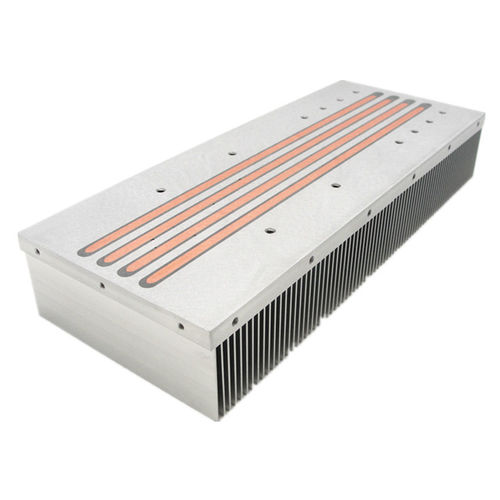How to create better design for aluminum heat sinks to optimize thermal performance
Designing heat sinks is about optimizing the surface area that is in contact with the coolant fluid or with the air around it. This sounds simple in theory, and when you have experts working on the design, the task absolutely becomes easier. It will wind up saving you money, too.

Heatsink for Liquid and air cooling
Why? Because the design phase is the phase in which you can achieve significant cost reductions. Once the design is locked in, the most significant cost-saving possibilities will be behind you. The important thing then is to go out and find the expertise you need – expertise in areas such as:
- Aluminium design
- Extrusion technology
- Product design
- Engineering
- Fabrication
Yes, you can find sophisticated software in the market for performing Computational Fluid Dynamics (CFD). This can help you design a heat sink. But you need requires more.
Involving expertise early means getting alternatives for alloy selection, advice for surface treatment and advice in the overall design. For example, integrating functionalities such as screw ports, cable channels, and features for fastening other parts to the heat sink.
These are going to be pros who understand your industry and know that improved thermal performance using aluminium extrusions tends to lead to less weight, higher efficiency and a lower overall cost.
.jpg)
Heatsink for mainboard
Factors that improve thermal performance of aluminium heat sinks
Aluminium heat sinks are usually air-cooled or liquid-cooled. Regardless of whether yours uses liquid or air cooling, the main factors that impact its thermal performance include air or liquid flow and fin/channel design. Other factors to consider in the design phase:
|
The most common heat sink materials are aluminium alloys in the 6000-series, primarily the 6060, 6061 and 6063 alloys. The thermal conductivity values of these alloys are solid. Their thermal properties are not as good as those of copper, but an extruded aluminium heat sink weighs about half as much as a copper conductor having the same conductivity, and the aluminium solution does not cost as much, either.


 Chia sẻ:
Chia sẻ: